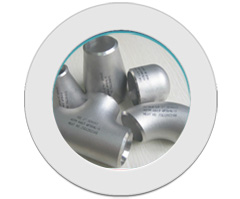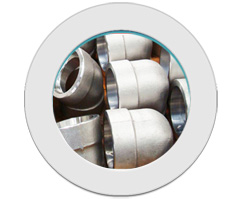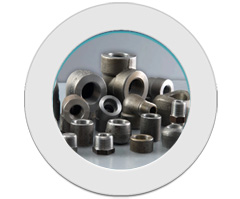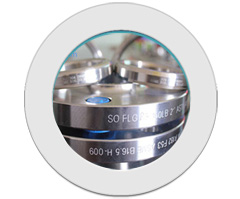What is Stainless steel
Stainless steel is an alloy, which is iron-based and contains various combinations of other elements to give it characteristics suitable for a wide range of applications. The element that makes stainless steel stainless is chromium. By definition, any steel, which contains a minimum of 11% chromium, is a stainless steel. The chromium content in the steel produces a rich, transparent oxide film, which coats the steel and protects it from corrosion and oxidation.
Generally speaking, oxidation or corrosion resistance is proportional to the amount of chromium contained in the steel. In order for the chromium additive to accomplish this, oxygen must be present. Should any breaks in the chromium oxide coating occur, the chromium oxide, in the presence of oxygen, can regenerate itself and therefore sustain this protection. Should there be an absence of oxygen, or in some reducing conditions, this protective film may be destroyed, and consequently, the stainless steel is termed active.
Most stainless or heat resisting steels are either melted by the electric furnace process or vacuum arc re-melted.
Heat treatment for hardness and strength is recommended mainly for the straight chromium steels. Cold working is generally utilized for the chromium-nickel classes of steel and has the advantage of increasing strength while retaining good ductility.

|

|

|

|
We MD Expots LLP are engaged in manufacturing Seamless & welded long radius elbow 90 deg, long radius elbow 45 deg, long radius & short radius elbow 180 deg (return bend), reduceing elbow, equal tee, crosses, concentric reducer, ecentric reducer, long stubend, short stubend, coller, pipe cap, long radius bends R = 3D, 5D, 6D, 8D, 10D & 20D in 15 deg, 30 deg, 60 deg & 90 deg & drawing base buttweld fittings, socket weld fittings, screwed fittings, forged fittings, threaded fittings, ferrule Fittings, Pipe Fittings, Stainless Steel Return Bend, Stainless Steel Hex Nipple, Stainless Steel Brass Fittings, Stainless Steel Lateral Fittings, Stainless Steel Steel Bush, Stainless Steel Buttweld Fittings, Stainless Steel Orifice Fitting, Stainless Steel Forged fittings, Stainless Steel Socket Weld Fittings, Stainless Steel Threaded Fittings, Stainless Steel Reducing Elbow, Stainless Steel Nipples, Stainless Steel Y Fittings, Stainless Steel Square Head Plugs, Stainless Steel Street Elbow, Stainless Steel Inserts, Stainless Steel RTJ Flange, Stainless Steel swivel flange, Stainless Steel WNRTJ Flange, Stainless Steel Orifice flange, Stainless Steel Ring Joint Flange, Stainless Steel Lap joint flange, Stainless Steel Expander flange, Stainless Steel Long weld neck flange, Stainless Steel Nipo Flange, Stainless Steel Spectacle Blind Flange, Stainless Steel paddle blind, Stainless Steel Threaded Flange, Stainless Steel Slip On Flanges, Stainless Steel spectacle flange, Stainless Steel Long weld neck flange, Stainless Steel Nut Bolt, Stainless Steel Rivets, Stainless Steel Nails, Stainless Steel Nuts, Stainless Steel U-Bolts, Stainless Steel Hex Bolts, Stainless Steel Studs, Stainless Steel Screws, Stainless Steel Hex Screws, Stainless Steel Bolts, Stainless Steel Washers, Stainless Steel Square Bolts.
American Iron and Steel Institute (AISI) Designation System
200′s – Chromium-Nickel-Manganese Stainless Steel this series is austenitic, non-heat treatable and non-magnetic.
300′s – Chromium-Nickel Stainless Steel this series is austenitic, non-heat treatable, and non-magnetic.
400′s – Chromium Stainless Steel this series is martensitic, heat treatable and magnetic. It also includes types, which are ferrite, non-heat treatable, and magnetic.
500′s – Chromium Stainless Steel this series is heat resisting, low chromium.
“L” at the end of the series number indicates low-carbon content. (Example: 304L)
“F” at the end of the series number indicates the addition of a “free-machining” element. (Example: 440F)
Other letters used at the end of the series number signify the symbol of the element added to the alloy. (Example: 440C – the C being the symbol for the Carbon additive)
Grade Families of Stainless Steel
Each one of the grades is grouped into one of five stainless steel families. These families are named after their metallurgical microstructure. The five groups are austenitic, ferritic, duplex, martensitic and precipitation hardening.
Ferritic Stainless Steels
The lack of other alloying elements means ferritic stainless steel are known as plain Chromium steels. They have a Chromium content between 12 and 18%. The carbon content in ferritic stainless steel is very low.
Ferritic stainless steel:
- Have moderate corrosion resistance
- Are not susceptible to stress corrosion
- Are magnetic
- Cannot be hardened by heat treatment
- Are always used in the annealed condition
- Poor weldability for most grades
Common ferritic grades include the proprietary grade 430 stainless steel and the cheapest stainless steel, grade 409 stainless steel. 409 stainless steel is the material of choice for automotive exhausts due to its combination of low price, corrosion resistance and excellent formability.
Austenitic Stainless Steels
Adding nickel to stainless steel in sufficient amounts, changes the microstructure to “austenite”.
70% of commercially produced stainless steel are austenitic. The most common grade of austenitic stainless steel is 304 (1.4301). Globally, 304 accounts for more than 50% of stainless steel consumed. A common name for 304 stainless is 18/8. This name refers to the average composition, 18% chromium and 8% nickel. It is sometimes used generically for austenitic stainless steel other than 304, even if the actual composition is vastly different.
Some of the features of austenitic stainless steel include:
- Excellent corrosion resistance
- Non-magnetic when annealed
- Rapidly work harden with cold work
- Not hardenable by heat treatment
- Ductile and readily formable
- Excellent weldability
- Hygienic with excellent cleanability
- Good performance at high temperatures
- Excellent performance at low temperatures
Other than 304 stainless steel, other common austenitic grades include the popular marine grade, 316 stainless steel and the machining bar grade, 303 stainless steel.
Martensitic Stainless Steels
The first stainless steel to be developed for commercial applications were martensitic stainless steel. These steels were used for cutlery. When compared with other stainless steel, the martensitic stainless group have a relatively high carbon content (0.1 – 1.2%). Like ferritic stainless steel, they are plain chromium steels containing between 12 and 18% chromium.
Features of martensitic stainless steelinclude:
- Moderate corrosion resistance
- Heat treatable
- Magnetic
- Inability to be cold formed
- Poor weldability
Martensitic grades include 420 stainless steel, which is used in engineering applications like shafts and 440C stainless steel – the hardest and most abrasion resistant of all the stainless steel.
Duplex Stainless Steels
Duplex stainless steel get their name from the fact that they contain both a ferritic and austenitic microstructure. They have a relatively high chromium content of between 18 and 28%. Nickel content is moderate at 4.5 to 8%.
At this level, the nickel content is too low to generate a fully austenitic structure. This results in a duplex microstructure containing both ferritic and austenitic phases.
Duplex stainless steel also tend to contain 2.5-4% molybdenum.
The prime advantage of duplex stainless is the combination of properties derived from both austenitic and ferritic stainless steel.
Duplex stainless steel have:
- Excellent corrosion resistance
- Increased resistance to chloride attack
- Good resistance to stress corrosion cracking
- Tensile and yield strength higher than austenitic or ferritic grades
- Good weldability
- Good formability
With excellent corrosion resistance the common duplex grade, 2205 stainless steel, is used in heat exchangers, chemical tanks and refineries.
Stainless Steel Sheet Finishes
Specifications of Stainless Steel
Grade compositions, mechanical properties and production specifications are governed by a range of international and national standards for stainless steel. While the old AISI three digit stainless steel numbering system (e.g. 304 and 316) is still commonly used for the classification of stainless steel grades, new classification systems have been developed.
These systems include a 1-letter + 5-digit UNS number, like S30400, as defined by SAE and ASTM. European countries are adopting unified Euronorm standards. These countries are either replacing or adapting their own country specific standards to mirror the Euronorm standards. Other designations being replaced include old BS and EN numbers like 304S31 and 58E.
Some grades are not covered by standard numbers and could be proprietary grades or be named using standards for specialist products like welding wire.
stainless steel standards are explained in detail in the British Stainless Steel Association “Guide to Stainless Steel Specifications”, also known as the BSSA “Blue Guide”.
The table 1 lists a range of stainless steel grades, their old BS designation, new UNS number and new EN designation.
Table 1. stainless steel grades and their international equivalents
| Grade | UNS No | BS | Euronorm No. |
| 301 | S30100 | 301S21 | 1.4310 |
| 302 | S30200 | 302S25 | 1.4319 |
| 303 | S30300 | 303S31 | 1.4305 |
| 304 | S30400 | 304S31 | 1.4301 |
| 304L | S30403 | 304S11 | 1.4306 |
| 304H | S30409 | - | 1.4948 |
| (302HQ) | S30430 | 394S17 | 1.4567 |
| 305 | S30500 | 305S19 | 1.4303 |
| 309S | S30908 | 309S24 | 1.4833 |
| 310 | S31000 | 310S24 | 1.4840 |
| 310S | S31008 | 310S16 | 1.4845 |
| 314 | S31400 | 314S25 | 1.4841 |
| 316 | S31600 | 316S31 | 1.4401 |
| 316L | S31603 | 316S11 | 1.4404 |
| 316H | S31609 | 316S51 | - |
| 316Ti | S31635 | 320S31 | 1.4571 |
| 321 | S32100 | 321S31 | 1.4541 |
| 347 | S34700 | 347S31 | 1.4550 |
| 403 | S40300 | 403S17 | 1.4000 |
| 405 | S40500 | 405S17 | 1.4002 |
| 409 | S40900 | 409S19 | 1.4512 |
| 410 | S41000 | 410S21 | 1.4006 |
| 416 | S41600 | 416S21 | 1.4005 |
| 420 | S42000 | 420S37 | 1.4021 |
| 430 | S43000 | 430S17 | 1.4016 |
| 440C | S44004 | - | 1.4125 |
| 444 | S44400 | - | 1.4521 |
| 630 | S17400 | - | 1.4542 |
| (904L) | N08904 | 904S13 | 1.4539 |
| (253MA) | S30815 | - | 1.4835 |
| (2205) | S31803 | 318S13 | 1.4462 |
| (3CR12) | S41003 | - | 1.4003 |
| (4565S) | S34565 | - | 1.4565 |
| (Zeron100) | S32760 | - | 1.4501 |
| (UR52N+) | S32520 | - | 1.4507 |
ASTM does not recognise the designations in brackets. Many other grades and specifications are available.
The different families of stainless steel tend to have different tensile and yield strengths. These typical strengths for annealed material are outlined in Table 2.
Table 2. Typical strength for annealed stainless steel from different families
| Stainless Steel Classifications | Tensile Strength | Yield Strength |
| Austenitic | 600 | 250 |
| Duplex | 700 | 450 |
| Ferritic | 500 | 280 |
| Martensitic | 650 | 350 |
| Precipitation Hardening | 1100 | 1000 |
Physical Properties of Stainless Steel
The reason for choosing stainless steel is normally due to advantages given by physical properties such as corrosion resistance.
In addition to corrosion resistance, the advantageous physical properties of stainless steel include:
- High and low temperature resistance
- Ease of fabrication
- High Strength
- Aesthetic appeal
- Hygiene and ease of cleaning
- Long life cycle
- Recyclable
- Low magnetic permeability
Corrosion Resistance of Stainless Steel
Good corrosion resistance is a feature of all stainless steels. Low alloy grades can resist corrosion in normal conditions. Higher alloys resist corrosion by most acids, alkaline solutions and chloride environments.
The corrosion resistance of stainless steel is due to their chromium content. In general,stainless steel contain a minimum of around 10.5% chromium. The chromium in the alloy forms a self-healing protective clear oxide layer that forms spontaneously in air. The self healing nature of the oxide layer means the corrosion resistance remains intact regardless of fabrication methods. Even if the material surface is cut or damaged, it will self heal and corrosion resistance will be maintained.
Extreme Temperature Resistance
Some stainless steel grades can resist scaling and retain high strength at very high temperatures. Other grades maintain high mechanical properties at cryogenic temperatures.
Simple Fabrication of Stainless Steel
Most grades of stainless steel can be cut, welded, formed, machined and fabricated using standard methods and equipment used for other types of steel.
High Strength
Component designs and fabrication methods can be altered to take advantage of the work hardening of stainless steels that occurs when they are cold worked. The resultant high strengths can allow the use of thinner material, leading to lower weights and costs.
Other stainless steel can be heat treated to increase strength.
Aesthetic Appeal
stainless steel can be supplied with a range of surface finishes. It can also be polished after fabrication to give the desired finish. The finish of stainless steel is easy to clean and maintain.
Hygiene and Ease of Cleaning
Stainless steel is non-toxic and readily cleaned. This makes stainless steel the material of choice for use in hospitals, kitchens, food, drink and pharmaceutical processing plants.
Long Life Cycle
The durability and corrosion resistance of stainless steel means it will outlast many competing products. The low maintenance characteristics also add to stainless steel often being the lowest cost choice in a life cycle cost comparison.
Recyclable
stainless steelis fully recyclable. New stainless steel normally contains between 50 and 80% recycled material. Scrap stainless steel can be stored without degradation to its value as a raw material.
Magnetic Permeability of Stainless Steel
Magnetic permeability is the ability of a material to attract a magnet. The austenitic grades are the only stainless steel grades that are not magnetic. Cold working can induce a limited degree of magnetism in austenitic grades other than 310 and 316 stainless steels.
Type 301 Stainless Steel
This grade is an austenitic stainless steel manufactured by-the electric furnace process. Its chromium and nickel content are lower than most other grades, offering the advantage of a high work-hardening rate which combines cold-worked high strength with good ductility. Tensile strength and hardness increase rapidly when the metal is cold rolled, cold drawn, or worked at room temperature. The standards of the aircraft industry are met by requiring adequate discard to be extracted from each ingot. Its application is indicated where low cost is desired and high corrosion resistance is not a primary concern.
Applications
Type 301 finds its primary usage in products necessitating great strength, but where working at elevated temperatures is not required. Used extensively in aircraft components, truck components and bodies, decorative applications, and etc.
Corrosion Resistance
Does not possess as high a degree of corrosion resistance as Type 302, but does remain unaffected by most normal atmospheric conditions.
Types 302, 304, 304L Stainless Steel
Type 302 is the fundamental alloy of the austenitic class. It is commonly known as “18-8″: 18% chromium; 8% nickel; and is the most commonly used of all the stainless grades, Type 302 is non-heat treatable, but cold-working considerably increases both its hardness and tensile strength. Type 302 in the cold state offers great versatility of workability because of its toughness and ductility and can be rigorously spun, rolled, drawn or machined. It offers outstanding weldability. It is extremely resistant to corrosion, and retains an untarnished silvery surface. It is also resistant to heat oxidation at temperatures up to 1500° F. It is non-magnetic in the annealed condition. The principal drawback of Type 302 is that of sensitization-under extreme conditions, carbide precipitation may occur. Type 304 alleviates this problem by decreasing the carbon content and thereby eliminating the possibility of intergranular corrosion. This low carbon alloy is most often utilized for applications requiring welding. An Extra Low Carbon alloy, Type 304L is also available for especially severe welding applications. Type 304L has the capability to avert any detrimental precipitation in the extreme 800° F. to 1650° F. range.
Applications
Both types are extremely popular in the food and dairy industries and for use in pharmaceutical equipment. It is exceedingly useful in applications where good mechanical properties and corrosion resistance are essential. It is highly desirable for products such as instrumentation where non-magnetism is fundamental. These grades are available in a wide range of forms and finishes.
Corrosion Resistance
Types 302, 304 and 304L exhibit good corrosion resistant qualities, particularly those corrosions caused by atmospheric conditions or chemicals. They lose some resistance at temperatures of about 750° F. to 1500° F. due to carbide precipitation. Type 304L however, has excellent corrosion resistant capabilities within this temperature range because of its low carbon content. Maximum corrosion resistance in all these grades can be achieved by annealing.
Type 310 Stainless Steel
Type 310 is the grade of stainless steel containing the highest chromium-nickel content of all grades – 25% chromium, 20% nickel, It is chiefly known for its superior scaling and corrosion resistance and it excels all other grades in its high temperature physical properties. At extremely high temperatures, its creep strength and resistance to brittling far surpasses all other austenitic grades. In the annealed state it is non-magnetic. Type 310 is a non-heat treatable alloy produced by the electric-furnace process, which concurs with the exacting standards of the aircraft industry.
Applications
Type 310 finds primary utilization in applications requiring excellent heat and oxidation resistance and where superior strength is a must. Common applications are found in the aircraft industry for engine parts and parts requiring welding, oil refinery equipment, heat exchangers and furnace parts, etc.
Corrosion Resistance
This grade possesses excellent corrosion resistance and withstands scaling at temperatures up to 2000° F. Its corrosion resistance reaches a maximum in the annealed condition.
Types 303S & 303Se Stainless Steel
Types 303S and 303Se are both free-machining modifications of Type 302. Sulfur or a combination of selenium and phosphorus are added to this “18-8″ chromium-nickel alloy to promote chip formation in machining rather than spindly spirals. Type 303 has uniform machinability and can be machined at speeds of SAE 3120, 3145, and 4615, adapting it very well for automatic screw machine applications. Manufactured by the electric-furnace process, this is a non-heat treatable alloy, the hardness and tensile strength of which may be increased greatly by cold working. It has good corrosion resistance, and is non- magnetic in the annealed state. It concurs with the stringent requirements of the aircraft industry.
Applications
Type 303 is most commonly used in applications requiring extensive machining, and where corrosion resistance, non-magnetism, and a good surface finish is imperative. Common utilizations of this alloy include aircraft fittings, shafts, spindles, and automatic screw machine applications.
Corrosion Resistance
Because of the additions of sulfur or selenium, the corrosion resistance of Type 303 is slightly lower than that of the other austenitic alloys. However, annealing increases its resistance to corrosion substantially.
Types 316 & 316L Stainless Steel
Type 316 is an electric furnace processed modification of Type 302: it contains 18% chromium; 8% nickel; and, 2-3% molybdenum. This addition of molybdenum increases both the corrosion resistance and the high temperature strength of this alloy. The most outstanding advantage of this addition is the increased corrosion resistance to reducing acids and pitting or pin hole corrosion. In general, Type 316 is known as the major all-around corrosion resistant austenitic stainless steel available. Under extremely elevated temperatures, Type 316 proves itself to possess remarkable creep and rupture-strength. This non-heat treatable, non-magnetic alloy possesses excellent cold forming and drawing properties, making it suitable for a wide range of applications. Type 316L is an extra low carbon modification of Type 316 recommended for use during welding operations. The low carbon factor eliminates the possibility of harmful carbide precipitation in the 800° F. to’1500° F. range.
Applications
Type 316 and Type 316L find its greatest use in the chemical, textile, paper, pharmaceutical, and photographic industries because of its excellent resistance to chemical corrosion. It also finds use where the combination of corrosion resistance and its extremely high strength at elevated temperatures is necessary.
Corrosion Resistance
Type 316 is known to be more resistant to atmospheric and chemical corrosion than any other grade of the stainless steels. Maximum corrosion resistance may be obtained by fully annealing this alloy. If the application calls for welding, Type 316L should be used, as it is highly resistant to carbide precipitation and intergranular corrosion. Which usually occurs at high temperatures.
Type 321 Stainless Steel
Type 321 is an electric furnace processed austenitic stainless steel. It is non-heat treatable and non-magnetic in the annealed condition. This alloy contains 18% chromium, 8% nickel and a substantial addition of titanium. The titanium forms insoluble and stable carbide, which ties up all the carbon in the alloy and therefore prevents it from precipitating as chromium carbides. This leaves the chromium in solution to resist corrosion to a very high degree. This is extremely beneficial in applications of temperatures ranging from 800° F. to 1600° F., as it eliminates the necessity for re-annealing after fabrication.
Applications
Type 321 is used principally for applications involving welding or sustained elevated temperature operations where re-annealing is not practical. It is used extensively in the aircraft and missile industries for engine parts, heat exchangers, exhaust stacks, rocket engines, manifolds, and etc.
Corrosion Resistance
This alloy is extremely resistant to intergranular corrosion and has very good corrosion resistance in weld areas. It has slightly less corrosion resistance to atmospheric conditions than Type 302 or Type 304 in the annealed condition.
Type 347 Stainless Steel
Type 347 is a non-heat treatable, austenitic, electric furnace processed grade of stainless steel very similar in composition to Type 321. The major difference between Type 321 and Type 347 is that rather than having an addition of titanium, Type 347 has columbium added to it. Tantalum occurs in nature in conjunction with columbium and therefore it may be said that both are additives to this alloy. Type 347 can withstand more severely elevated temperatures than Type 321, as the resulting columbium carbide is more stable and insoluble than the titanium carbide. The only drawback in the use of Type 347 as opposed to Type 321 is that it is not recommended for use in radioactive services as radioactive tantalum has a much longer half-life than columbium. It is non-magnetic in the annealed state.
Applications
Type 347 is mainly used where corrosion resistance and sustained operations at temperatures between 800° F. and 1600° F. is of the utmost importance. It is also a superior grade for use on heavy welded objects, which cannot be re-annealed. It finds its principal applications in aircraft and missile engines, high temperature equipment in chemical industry, manifolds, furnace and blower parts, and etc.
Corrosion Resistance
Resistance to intergranular corrosion and carbide precipitation is excellent with this grade. Its general atmospheric corrosion resistance is good, being similar to that of Type 302.
